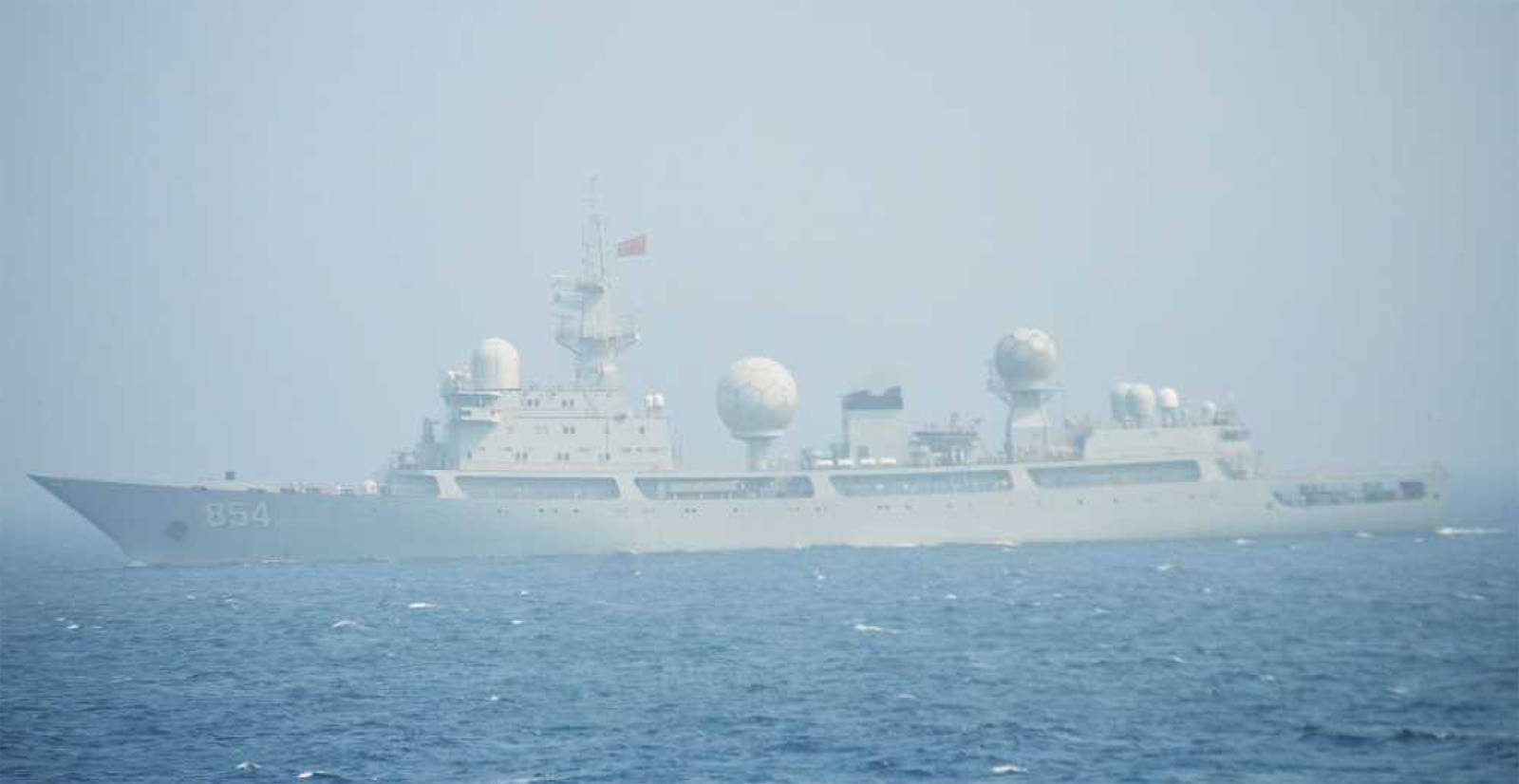A Chinese surveillance ship was in the Gulf of Alaska last week when the U.S. Missile Defense Agency tested a defense system that China opposes.
On Wednesday, a spokesman for the U.S. Northern Command confirmed the People’s Liberation Army-Navy ship Tianlangxing was about 100 miles off Kodiak early last week.
CNN first reported the ship’s presence on July 13.
The ship was in international waters, and the Chinese government has made no official statement about the ship’s mission. MDA had previously announced the THAAD test would take place in July, but the exact date and time had not been announced.
The Tianlangxing was tracked by the Japanese Ministry of Defense, which monitored it as it sailed between the Japanese Home Islands of Honshu and Hokkaido in the first week of July.
The ship’s voyage is the first by the Chinese Navy into Alaska’s “Exclusive Economic Zone” since 2015, when a naval task force sailed through the Aleutians. The EEZ, recognized by international law, extends 200 miles from shore.
The United States has made no diplomatic protest; the U.S. government has long advocated for the right to sail intelligence-gathering ships within the EEZs of other nations. In an analysis published by the Asia-Pacific magazine The Diplomat, editor Ankit Panda suggested the Chinese ship’s presence wasn’t unusual.
In January, the Chinese state newspaper China Daily published information about the class of ships including the Tianlangxing (whose name, translated, refers to the star Sirius).
“The (ship) is capable of conducting all-weather, round-the-clock reconnaissance on multiple and different targets,” China Daily reported, quoting a report that added, “the ship is so sophisticated that only a few countries, such as the United States and Russia, are capable of developing it.”
Last week, the Missile Defense Agency used Kodiak’s Pacific Spaceport Complex to test the Terminal High Altitude Area Defense System (THAADs) against an incoming intermediate-range ballistic missile fired by an aircraft north of Hawaii.
[Alaska’s missile defense test is a success]
The test was the most difficult performed by THAAD, which had never before been used against an IRBM. According to MDA, the test was a success, and video provided by the agency appeared to show the IRBM exploding as a THAAD interceptor struck it. The interception took place over the Gulf of Alaska.
The results and video could not be independently confirmed.
The THAAD test came one week after North Korea tested an intercontinental ballistic missile with sufficient range to reach Alaska. THAAD has never been tested against an ICBM, but missile-interceptors based at Fort Greely, near Delta Junction, have been tested against ICBMs with mixed results.
The THAAD system is intended for use against missiles that have shorter ranges than the ICBM tested by North Korea on July 4. North Korea has several varieties of short-range missiles, and THAAD is likely to be deployed in Korea and Japan to offset the danger of North Korean missiles there.
South Korea already has two THAAD launchers, but their deployment has been contested by China, which views the THAAD’s accompanying radar system as a threat.
Contact reporter James Brooks at james.k.brooks@juneauempire.com or call 523-2258.

